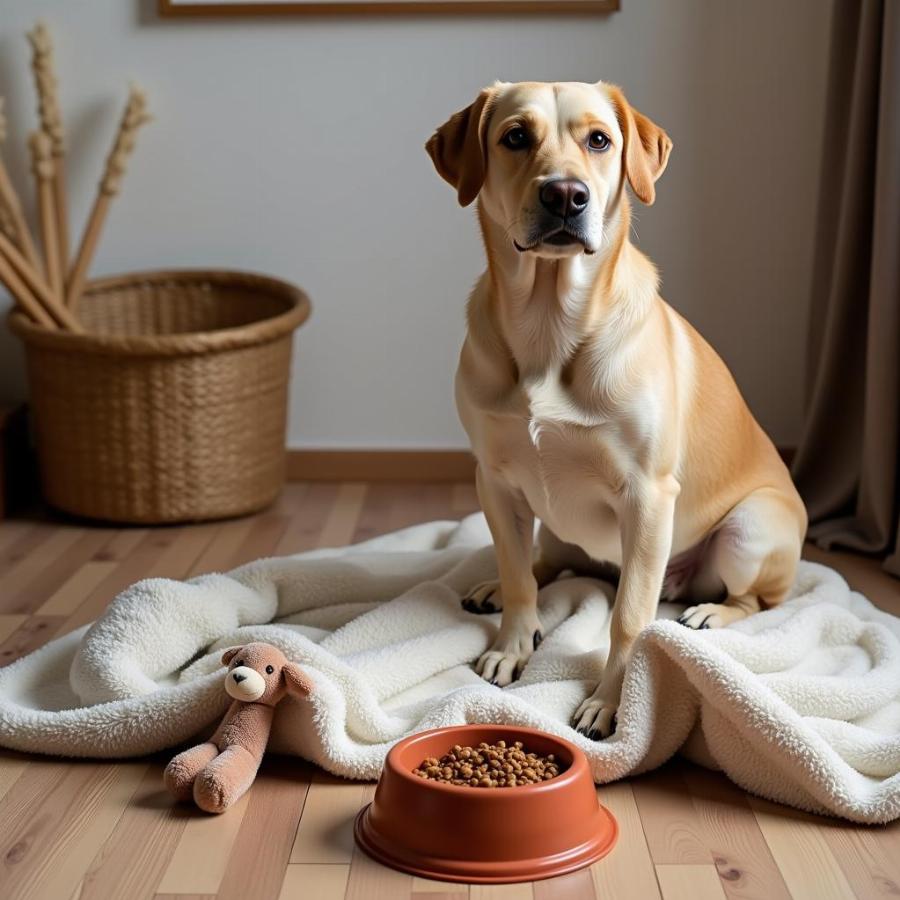After spaying, it’s common for your dog to experience a temporary loss of appetite. This period of dog not eating after spay is usually short-lived and nothing to worry about, but it’s important to understand why it happens and what you can do to help your furry friend feel better. We’ll explore the reasons behind post-spay appetite loss, offer tips to encourage eating, and highlight when you should seek veterinary attention.
Understanding Why Your Dog Not Eating After Spay
Several factors can contribute to a dog’s decreased appetite following spay surgery. Pain medication can cause nausea, making food unappealing. The anesthesia itself can also disrupt their digestive system. Additionally, the surgery itself is a stressful event, which can further suppress appetite. Just like us, dogs might need some time to recover and feel like eating again after a major procedure.
Encouraging Your Dog to Eat After Spaying
While a short period of not eating is usually normal, there are ways to encourage your dog to eat after her spay surgery. Offer smaller, more frequent meals instead of large portions. Sometimes, warming the food slightly can make it more enticing, as the aroma becomes stronger. You can also try adding a small amount of low-sodium chicken broth or plain cooked chicken to their regular food to boost its flavor and palatability.
Making Mealtimes More Comfortable
Make sure your dog’s eating area is quiet and comfortable to minimize stress during mealtimes. A soft blanket and a familiar toy can help create a relaxing environment. Avoid forcing your dog to eat, as this can create negative associations with food. Instead, offer food and if they don’t eat it within 15-20 minutes, remove the bowl and try again later.
 Creating a comfortable eating environment for your dog
Creating a comfortable eating environment for your dog
When to Seek Veterinary Help
Although a decreased appetite after spaying is common, prolonged refusal to eat can lead to complications. If your dog hasn’t eaten anything for more than 24 hours after surgery, or if they exhibit other symptoms like vomiting, diarrhea, lethargy, or pain, contact your veterinarian immediately. These signs could indicate a potential complication that requires medical attention.
Monitoring Your Dog’s Recovery
Keep a close eye on your dog’s overall recovery. Observe their behavior, bowel movements, and urination. If you notice anything unusual, don’t hesitate to reach out to your vet. Early intervention is key to preventing any potential health issues.
Conclusion
A dog not eating after spay is a typical occurrence, often due to pain medication, anesthesia, or stress. By understanding the reasons and implementing these tips, you can help your furry friend regain their appetite and recover smoothly. Remember to monitor their recovery closely and contact your veterinarian if you have any concerns.
FAQ
-
How long is it normal for a dog not to eat after being spayed? Typically, dogs regain their appetite within 24-48 hours after spaying.
-
What can I feed my dog if she refuses her regular food after spaying? Try offering bland, easily digestible foods like boiled chicken, plain rice, or scrambled eggs.
-
Should I force my dog to eat after spaying? No, forcing your dog to eat can create negative associations with food. Offer food, and if they don’t eat, try again later.
-
When should I be concerned about my dog not eating after spay surgery? If your dog hasn’t eaten anything for more than 24 hours, or if they exhibit other symptoms like vomiting or lethargy, contact your veterinarian.
-
Can pain medication cause loss of appetite in dogs after spaying? Yes, pain medication can cause nausea and decrease appetite.
-
How can I make my dog more comfortable after spaying? Provide a quiet, comfortable resting area, offer small frequent meals, and avoid forcing them to eat.
-
What are the signs of complications after spay surgery? Vomiting, diarrhea, lethargy, excessive bleeding, or redness around the incision site can be signs of complications.
More Helpful Resources
Beaut Dogs is your trusted source for all things related to dog care, offering expert advice and guidance for every stage of your dog’s life. From choosing the right breed to providing comprehensive care guides, we are committed to empowering dog owners with the knowledge they need to ensure their furry companions thrive. For personalized support and answers to your specific questions, contact us at [email protected]. Beaut Dogs is here to help you navigate the wonderful world of dog ownership!